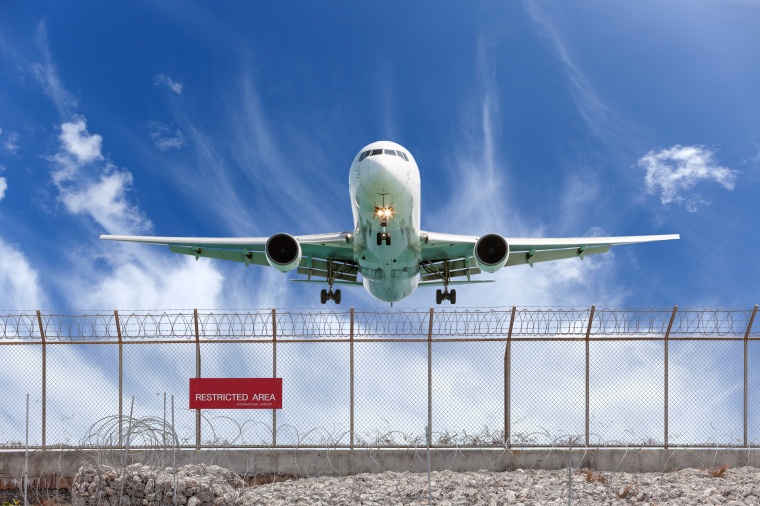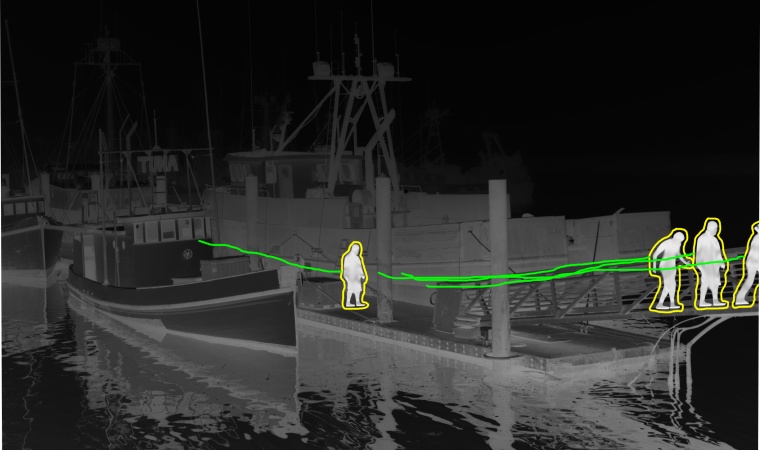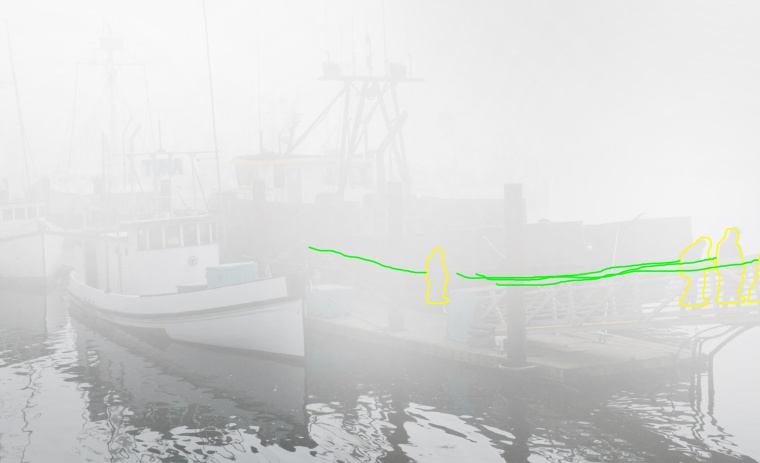End-to-End Perimeter Security For Extreme Conditions
Perimeter protection of critical infrastructure such as airports, government buildings, power plants, oil refineries, sea terminals, and bridges is a top priority. Networked securi...



Perimeter protection of critical infrastructure such as airports, government buildings, power plants, oil refineries, sea terminals, and bridges is a top priority. Networked security cameras have become the status quo in the protection of these areas over recent years. But despite constant advancements in technical capabilities, the number of security breaches is increasing at an alarming rate.
Current research conducted by the Associated Press has found the number of intrusions at the busiest 31 airports in the United States at an all-time high: the Transportation Security Administration (TSA) counted 1,388 perimeter security breaches between 2001 and 2011 at the 450 airports it regulates. Since 2012, the number of intrusions has shot up to one perimeter breach every 9.5 days on average, with intruders scaling fences, walking past vehicle checkpoints or even crashing cars into barriers in order to access restricted areas.
The industry has been mounting a strong response. The European and North American perimeter security markets are set to reach $3.91 billion and $5.1 billion by 2019, respectively. Within these markets, network video surveillance has high potential to drastically increase perimeter security. But as experience shows, even some of the most advanced and reliable cameras fall short of providing complete protection for two reasons.
Eliminating Blinds Spots, Mitigating Human Error
As intruders resort to more and more complex methods to bypass security, the main weak spot facing security cameras remains unchanged: human error. The average security operator can miss 90% of activity after viewing the video screen for only 20 minutes. Combined with the multitude of cameras operating simultaneously at large facilities the size of commercial airports, these lapses in attention create loopholes for intruders. And one loophole, even for a few seconds, can be enough to allow unwarranted access into critical areas.
Intruders are also learning to exploit technological weaknesses, or ‘blind spots’ in conventional optical video cameras; even the most advanced high-definition versions. Lapses in security coverage can be caused by extreme conditions that result in limited vision. Smoke, dust or spray from bodies of water, heavy rain, glare from the sun or complete darkness can all be abused as covers to bypass security. Next to these natural occurrences, criminals can also intentionally ‘blind’ visible light cameras by shining a laser or strong light source at them.
Blending Analytics with Thermal Imaging
Confronting these threats to perimeter security, the industry has been pursuing two approaches: firstly, Video Content Analysis (VCA) helps effectively close the loopholes created by human error and trigger automated alarms upon detecting intruders. And secondly, the shortcomings of visible light cameras can be overcome by thermal imaging cameras – detecting the heat signatures of intruders – in devices that have become more powerful and affordable in recent years.
But in order to make a difference, these two approaches need to work in unison. Without seamless image capture, even the most powerful content analysis algorithms have no chance of detecting ‘invisible’ intruders exploiting camera blind spots. And without the aid of Video Content Analysis (VCA), thermal imaging cameras are reduced to becoming one more screen in the control room that becomes largely unmonitored after a matter of minutes.
The Next Evolution in Perimeter Protection
As an answer, Bosch has introduced an evolution in the security cameras market: the Dinion IP 8000 thermal camera combines powerful thermal imaging with Bosch’s proprietary suite of built-in Intelligent Video Analytics. Embedded within the larger context of the company’s security and safety systems video solutions, the corrosion-proof camera comes with built in analytics as standard. It is joined in the thermal imaging product portfolio by the MIC IP 9000i fusion camera that fuses optical and thermal imagers in a single weather-proof, robust housing, also with built-in video analytics.
In mission-critical applications like the perimeter protection of airports, critical infrastructure and border patrol, Intelligent Video Analytics can be customized with user-defined rules. These include automatically triggered alarms for an intruder climbing a fence, someone leaving an object behind or parking in an unauthorized area. The system can intelligently track moving objects and can be configured to recognize changes in a person’s speed (running), shape (crouching) or aspect ratio (falling).
Combined with heat-based images from the thermal and fusion cameras, Intelligent Video Analytics performs these functions at greater distances, under poor visibility and extreme weather conditions, thereby adding an unprecedented layer of security to these critical zones and leaving no more blind spots for intruders.
Focus on Intelligent Video Analytics
The symbiosis between precise thermal optics and intelligence at the edge goes beyond just preventing blind spots and human error. Intelligent Video Analytics actually makes the camera even more valuable in perimeter threat detection. Equipped with a 65mm lens, the 8000 model delivers early detection and alerts over distances up to 610m – even in complete darkness – thanks to the combination of thermal imaging and Intelligent Video Analytics. At such distances, operators would struggle to notice changes on the screen without Video Content Analysis (VCA).
Intelligent Video Analytics also adds sense and structure to video footage via metadata for later analysis or forensic searches. In a typical setting, 20 seconds are sufficient to filter all relevant video sequences out of four hours’ worth of video using metadata. The system also supports searches for events originally not set up as an alert via the unique forensic search functionality. This ‘smart’ data can be used in police investigations, for instance to find a car of interest based on color, license plate or the direction it was traveling, even in fog or heavy rain.
In challenging applications across the globe, Intelligent Video Analytics has proven highly successful in ruling out false alarms that are especially prevalent in challenging environments prone to snow, wind, rain, hail, and water reflections. Both cameras operate with a bit rate reduction of up to 80% to ease storage bandwidth. They also achieve a high degree of data security via proprietary Bosch encryption technology at the hardware and network level.
Built to Withstand the Elements
The Dinion IP 8000 thermal camera offers built-in Intelligent Video Analytics and high corrosion resistance meeting the EN 50130-5 salt mist test, withstanding up to 1,000 hours of salt mist under test conditions. Thermal image data from moving or stationary objects is translated in real-time into high-quality thermal images, available in two video resolutions: QVGA or VGA. The camera’s level of actionable image data delivers images even in situations where natural barriers such as leaves or foliage obstruct the field of view.
The camera actively supports easy set-up and calibration while the built-in gyro sensor helps configure the camera’s pre-loaded analytics by gathering the most important parameters automatically. Users are merely required to enter the height at which the camera is mounted and the configuration process for the on-board analytics is complete.
Complete Perimeter Safety
In the bigger picture, the Dinion IP 8000 thermal camera is a key step in Bosch Security’s solutions focused mission to provide operators with the most relevant image data possible. And while it marks a new level of early detection at previously unattainable distances, there is a caveat: it is not a stand-alone replacement for visible light cameras, but plays a supporting role in creating a high level of security in existing systems.
As the next step in joining Intelligent Video Analytics with thermal imaging, in early 2018 Bosch brought to market a new moving camera combining both thermal and optical camera capabilities: the Mic IP fusion 9000i camera provides full situational awareness and early object detection – even under limited visibility conditions due to smoke, in complete darkness or when objects or people are obscured by foliage.
The camera’s metadata fusion feature combines metadata from the camera’s built-in optical and thermal imager. This helps users to focus on ‘invisible’ things that need attention. If an event is detected that is not visible in the video stream being watched, an alarm is triggered anyway for full situational awareness around the clock.
With these scenarios in mind, these two cameras represent crucial milestones in Bosch Security System’s ongoing journey of making video image data more relevant to end users. By adding thermal cameras powered by Intelligent Video Analysis to their perimeter security solutions, security staff may never miss a potential threat and can retrieve the correct data quickly, however extreme the conditions.
most read

Security management, building security & perimeter protection: the winners of category E at the GIT SECURITY AWARD 2026
GIT SECURITY AWARD 2026: Security management, building security & perimeter protection - an overview of the most innovative solutions

Is Your Venue Ready for Martyn’s Law?
Martyn’s Law demands stronger security by 2027. Is your venue prepared to protect and respond?

The Benefits of AI-based Video Surveillance Solutions for Sports Venues
Dallmeier Interview: Artificial intelligence Makes Stadiums Smarter

Machine & plant safety: The winners of category A at the GIT SECURITY AWARD 2026
GIT SECURITY AWARD 2026: Machine & plant safety - an overview of the most innovative solutions










